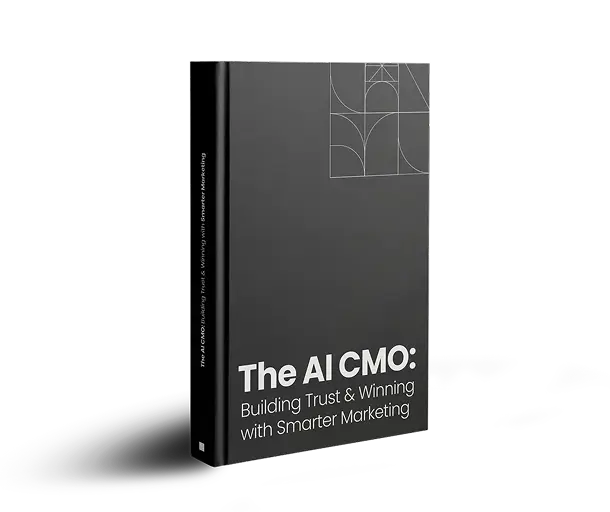
Introduction
In sales, the motive is to turn interested people into paying customers. But with a pile of leads to sort through, how do you find the most promising ones? Today, generating quality leads is crucial for business growth. However, many software companies often fall victim to common lead generation mistakes that hinder their potential.
From unclear messaging to poor timing, these mistakes can prevent your software from standing out in the crowded B2B landscape. Understanding and addressing these frequent Lead generation pitfalls will help you fine-tune your strategy, improve lead quality, and ultimately drive business success. Avoiding these missteps, software companies can build a more effective lead generation process and boost their results.
The Role of Lead Nurturing in Converting MQLs to HQLs
Lead nurturing, to a large extent, is a role that falls squarely on marketers. It is a process that requires establishing relationships throughout the sales funnel so that by the time salespeople make first contact with a lead, that lead would take a reasonably short time to close.
2025 Insights:
According to DemandGen’s 2025 report:
- Companies with structured lead nurturing processes report a 62% higher sales close rate.
- Effective lead nurturing results in a 33% reduction in lead generation costs compared to competitors.
Successful lead nurturing involves:
- Listening to what the prospect is saying they need.
- Providing valuable information such as industry data, product details, and company activities.
By doing this, you will:
Stay in constant touch with your leads, ensuring ongoing communication. Note that you must obtain consent to avoid emailing prospects without permission, which could harm your business.
Shape the prospects’ decision-making process by positioning your product as a viable solution to their problem.
Lead nurturing also enables you to track digital signals, such as website activity and third-party intent data, giving you actionable insights. Automated tracking systems make it easier to pass leads through a lead scoring system and determine when they’re ready for the sales team.
Why Lead Scoring Is Important?
Scoring leads helps gauge interest levels and determine sales readiness. While every industry, company, or customer base is unique, the methodology for creating a lead scoring system must account for these nuances. Whenever possible, lead scoring should be campaign-specific.Key metrics for lead scoring in:

- Fit: Does the prospect match your ideal customer profile (ICP)? Consider their role, industry, and company size.
- Engagement: How frequently does the prospect interact with your content, website, or third-party platforms? Do they attend relevant events or webinars?
- Intent Signals: Are they searching for solutions or engaging with content relevant to their pain points? Intent data tools like Bombora or 6sense can be pivotal here.
In 2025, 82% of top-performing B2B companies use AI-powered tools to automate lead scoring, increasing accuracy by 45% compared to manual methods. (Source: Gartner, 2025)
Lead Qualification Questions to Identify HQLs
While it is important to encourage and foster trust between your marketing and sales teams, it is vital that the sales team pass any leads they receive through a “sales sieve”. This process doesn’t indicate doubt but is appreciative of the differences involved in sales and marketing processes. As well, as with anything in a company, a second pair of eyes ensures accuracy.
It is important to stress the importance of asking questions. Before launching into any engagement with your leads, ask them questions to establish their fit.
Key Lead Qualification Questions:
- Does the lead have decision-making authority?
- Are they aware of a pain point your solution addresses?
- Is the cost of ignoring the pain point significant enough to warrant action?
- Do they have a budget?
- Have they expressed interest in discussing potential solutions?
How to Convert MQLs into Sales-Ready HQLs
We have already pointed out that a high-quality lead is one that is sales ready. Below are a few important points to further refine them to get HQLs.
- Do they have the power to make decisions?
- Do they have a pain point that they believe could be addressed using your service?
- Would it be more costly for them to ignore the pain point? In which case, does it make more sense to resolve it?
- Do they have a budget?
- Have they expressed willingness to meet and discuss a solution?
- Does the sales team consider them a high-quality lead?
The fact that a lead is classified as HQL doesn’t guarantee a sale. A lot of work goes into closing leads, although the advantage is that done right, the process of closing HQLs can be a lot shorter and less painful as the lead is closer to a buy.
MQLs are prospects who have taken actions such as downloading, form filling, loading their cart, clicking on ads, requesting for additional information, etcetera. But even though these actions are meaningful, they don’t guarantee that a lead will form a relationship with you. As such, MQLs rank lower than HQLs and have to be nurtured through tactics such as:
- Content creation
- Social media
- Content syndication
- Google ads
- Landing pages, etcetera
You can not underestimate the role that intent data plays in the lead nurturing process. Your prospects give a lot of behavioral signals as they browse the internet for solutions.
If you can harness this data and make it actionable, you will stand a better chance of targeting prospects with a higher likelihood for converting down the funnel. And here, actionable refers to being able to use that data to deliver the right message to the intended recipients at the intended time.
It’s important when using intent data, to not be stuck on internal data alone as this can be misleading. This is because first party (or internal data) comes from your own marketing activities and therefore it may not necessarily represent the entire picture of a prospect’s online activities.
By tracking third party intent data, you can better gauge surge signals recorded across your industry, on topics that are of interest to you.
Conclusion
Revenue generation for B2B depends heavily on high quality leads. To close a B2B sale, long cycles are involved, and a lot of resources also go into nurturing every lead. It is therefore a great danger to your bottom lines if you invest a lot of time on every lead you get, only to have majority of them not pan out. This is what makes the process of vetting MQLs to HQLs extremely vital.
Now you may think that having a database of high-quality leads somehow guarantees you positive ROI on your marketing campaigns. But this is not the case. After identifying your HQLs, there is still a lot to be done to make your campaigns successful. But that is a longer topic to be discussed at a later date. For now, know that your leads aren’t created equal, and marketing team needs to nurture all leads to become HQLs through a prior agreed-upon process with sales.
Aligning marketing and sales is key to maximizing lead potential. Without clear communication and a structured approach, even the best leads can fall through the cracks. Ensuring seamless collaboration between teams will help drive conversion rates and improve overall revenue outcomes.
Effective lead generation ensures a steady flow of high-quality prospects ready for conversion. Our services help you identify, and engage the right leads to drive business growth.

Our blog
Latest blog posts
Tool and strategies modern teams need to help their companies grow.

Our definition of marketing success in B2B is evolving. For years, traditional metric...

Video has emerged as one of the most effective tools to cut through the noise and con...

The way B2B buyers research, engage, and decide has changed and so must the way marke...






